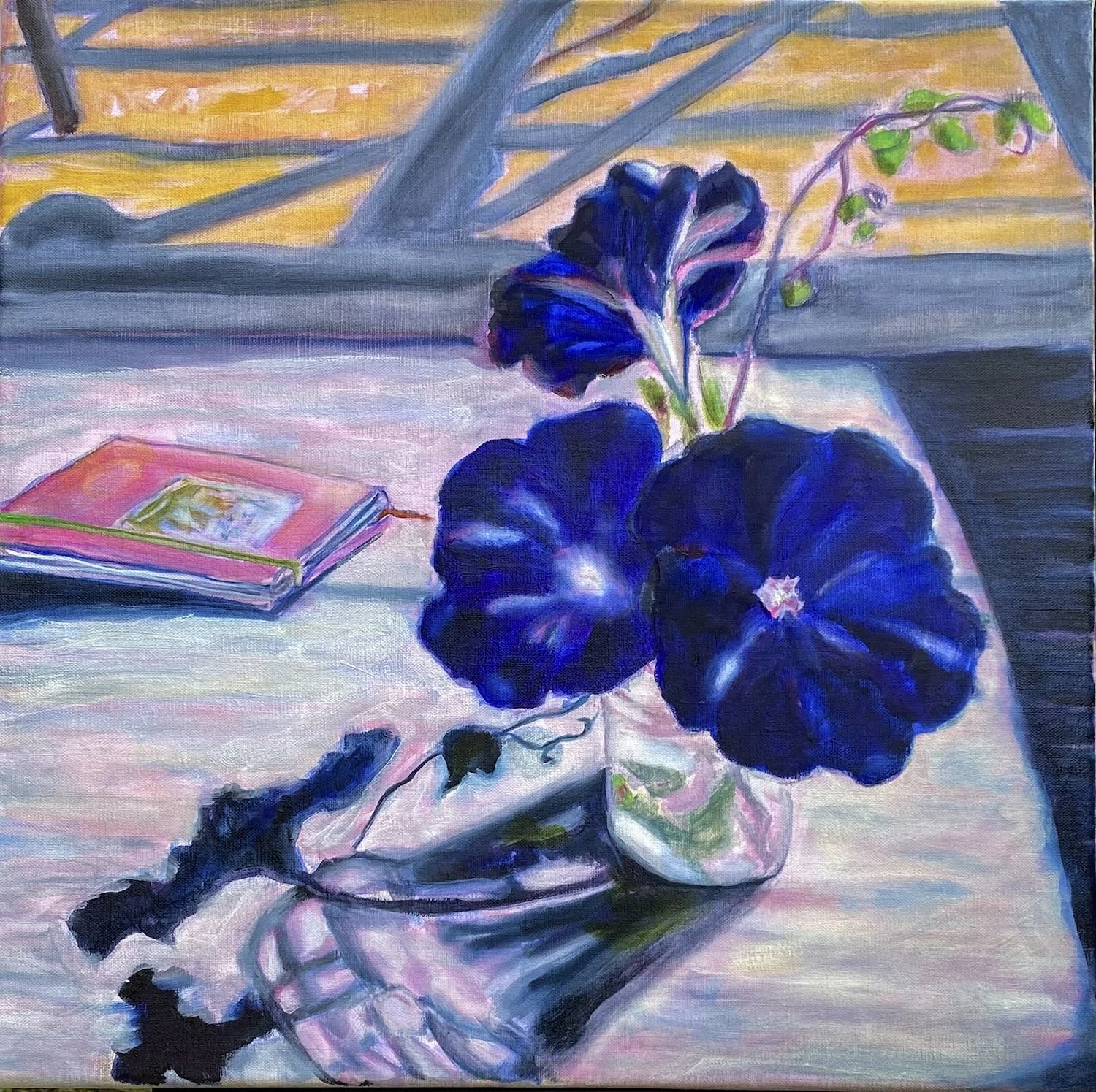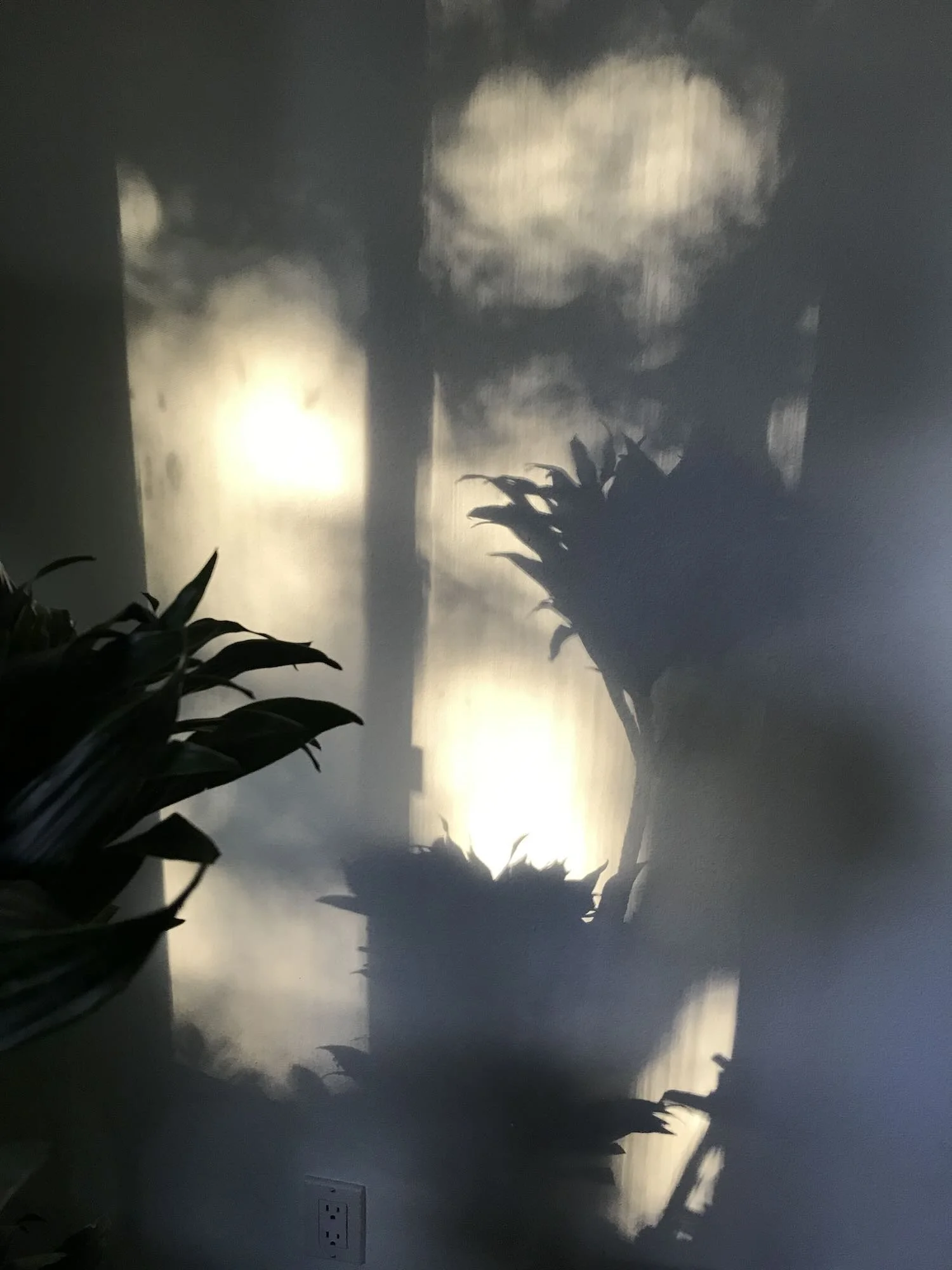Painting as Slow Cinema
Laure Brost Halliday, “Morning Glories at Bread and Salt,” oil on linen, 2023.
How a still frame, a brushstroke, and a shimmer of light on shadow can hold a world.
A film frame is a fraction of a second. A brushstroke, a moment held just a breath longer. Both are ways of saying: Look. Look closer.
When I paint alla prima, wet into wet, all at once, I’m not chasing perfection. I’m chasing presence. The slant of afternoon light across a chair. A shadow flirting with a striped tablecloth. The impossible periwinkle cast on a lemon rind at dusk.
You blink, and it’s gone. But not on film, and not on the canvas.
To me, painting is a kind of slow cinema.
Not in a genre sense (though late afternoon my studio would make a fine set for a moody film noir), but in the way time bends. How it lingers. How it insists you stay a little longer. Paintings aren’t static, they unfold.
A painting doesn’t move but it invites you to be moved.
First the colors. Then the shadows, then the light. Then, something quieter. Emotion. Memory. Mood.
In a world of fast everything, a painting invites contemplation as it expands before you. It asks you to pause, look, and perhaps feel something you weren’t expecting. A flicker of nostalgia, a glint of recognition, a sudden joy, a soft ache for something beyond words.
Like cinema, it’s not just what you see, but also what shifts in you.
PS: If you love moments that hover between hues that whisper, take a peek at my latest work here.
Or wander into my newsletter, Postcards from the Palette, for more painterly reflections and behind-the-brush scenes.


